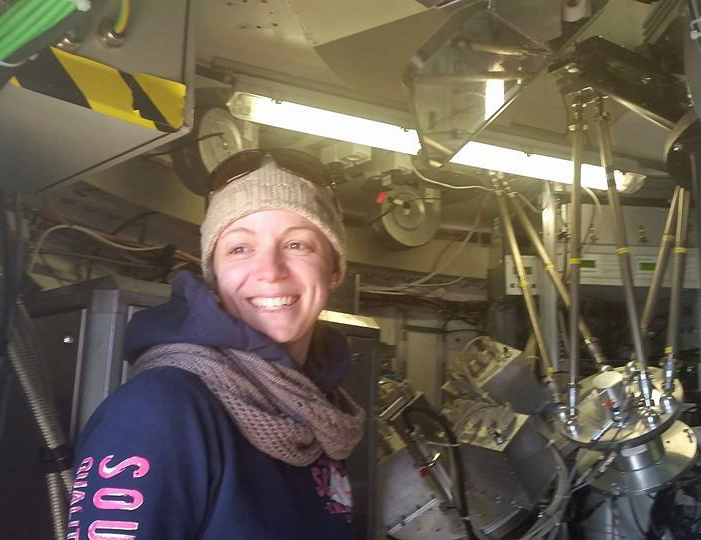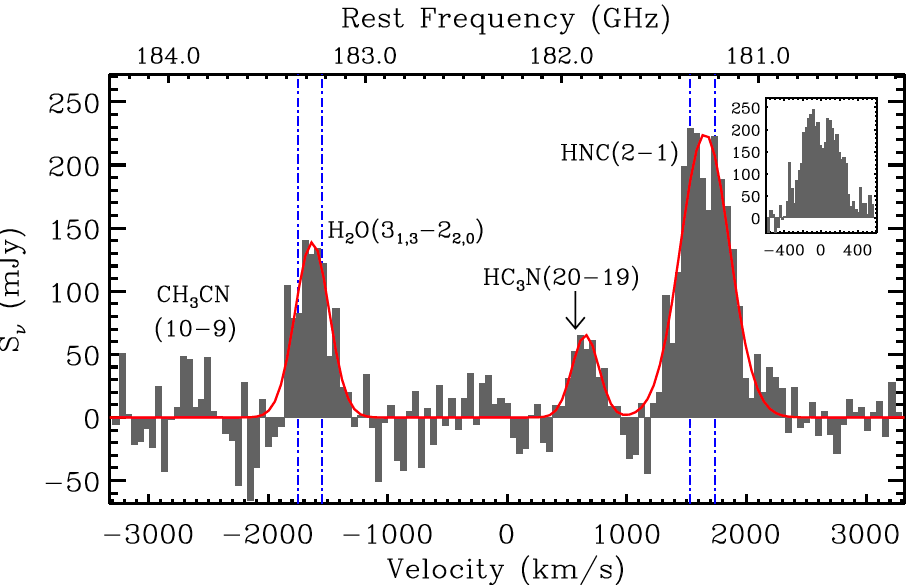Welcome back dear reader to this space, where we can get to know a bit more about some of the people in our APEX research community. In our previous inaugural edition we introduced Silvia Leurini who told us about her research about massive star forming regions and the detection of deuterated molecules like DCN with the heterodyne instruments at APEX.
In this second edition we are also very happy to present somebody who, as in the case of Silvia, was visiting us frequently to support observations on site as part of her duties as ESO fellowship.
Introducing Dr. Maud Galametz
We will be talking in this opportunity to Dr. Maud Galametz. She is currently a postdoctoral researcher at the Astrophysics Department of the Commissariat à l’énergie atomique (CEA) in Saclay, France.
Dr. Galametz, originally from France, got her Ph.D. in Astronomy in 2010 at the Astronomy department of CEA, Saclay (France) on the “Comprehension of the Infrared to Submillimeter View of the Interstellar Medium of Nearby Galaxies“.

After that, she worked as Postdoctoral Research Associate at the Institute of Astronomy in Cambridge (UK) until 2013. She then took her research fellow position at ESO in Garching bei München (Germany). During her period as ESO fellow, Maud was travelling to APEX in different opportunities as visiting astronomer, helping to support the APEX-ESO service observations. Since 2016 she is back at CEA Saclay as a postdoctoral researcher.

I started my PhD on the characterisation of the dust properties in dwarf galaxies in 2007. The first data I had on hand were APEX data from the LABOCA instrument. Their faint emission was really challenging to analyse but led to crucial constraints on the dust population emitting in these exotic and relatively dust-poor objects.
The Herschel Space Mission was launched the last year of my PhD, in 2009. As LABOCA uses the same bolometer technology for its detectors than Herschel’s bolometer arrays PACS and SPIRE, I was prepared when we acquired the first data from space.
I have used the LABOCA camera and the SEPIA180 receiver equally, via regular requests for LABOCA and large programs or DDT requests for SEPIA.

As my career evolved, I started to incorporate more spectroscopy in my analysis and was an ESO fellow in Garching when we installed SEPIA180 on the APEX telescope. I was also at APEX when both the ArTéMiS camera and the SUPERCAM visiting instrument were commissioned on the antenna: I ended up using both for my own science as well. I guess one cannot observe the installation and the instruments at work without being inspired by the science opportunities they can offer. It has widen my scientific interests in paths I would probably not have taken spontaneously otherwise.
Observing at a telescope when you are an observational astronomer is a must. It gives you a better sense of how the instrument you use really works but it also allows you to directly talk to the observers that operate the telescope all year round for us. It has helped me 1) optimise the analysis of my data and 2) strengthen my follow-up time requests.
To add up to the experience, the Atacama plateau where APEX is installed is a very rare place on Earth. I feel privileged to have had the chance to just be there, when the sun sets on the desert.
It has been crucial. For my research, more than half of my PI papers make use of APEX data, at various levels (i.e fully or partly based on APEX data). For my career evolution, I chose to be an APEX observer right when I started my ESO fellowship. It was a fantastic opportunity to participate to the end-to-end process – from the instrument installation to the scientific publications – and give you knowledge thus credibility when you speak to scientists and engineers.

As a regular observer, I was also in contact with researchers on science subjects often far from my own. It keeps you up-to-date with scientific achievements and current challenges out on your scientific usual bubble.
In several papers using APEX sub-mm observations of nearby galaxies, we proved that the dust models commonly used at that time to fit these observations were leading to dust masses that looked inconsistent (too high) compared to the gas masses detected in these objects.
These results were raising questions on whether or not our dust models were correct. Then data from Herschel came in, then results from the Planck mission, proving that we were asking ourselves the right question. Yes, the dust composition in galaxies is more complex that what we thought, and dust grains can dramatically evolve within the interstellar medium. We have learned a lot from the space missions, but the ground-based facilities are, as often, precursors.
The range of scientific fields that can make use of APEX instruments is extremely large, from Galactic to extragalactic science. So whatever the science field you are working on, there is a high chance that APEX can help you move forward, one way or another.
And the pressure on its instruments is usually lower than at other facilities. So it offers strong opportunities for a larger range of PIs, in particular students that are usually reluctant to lead projects.